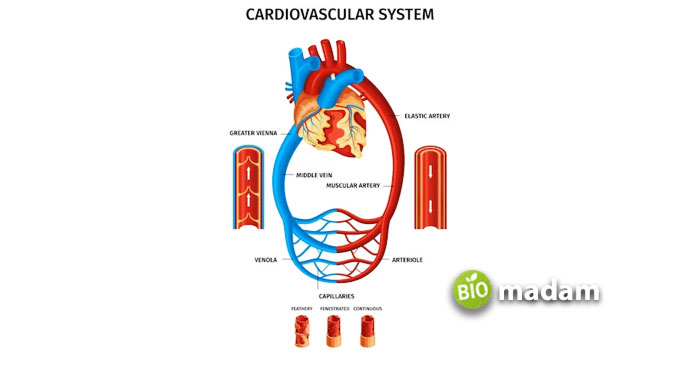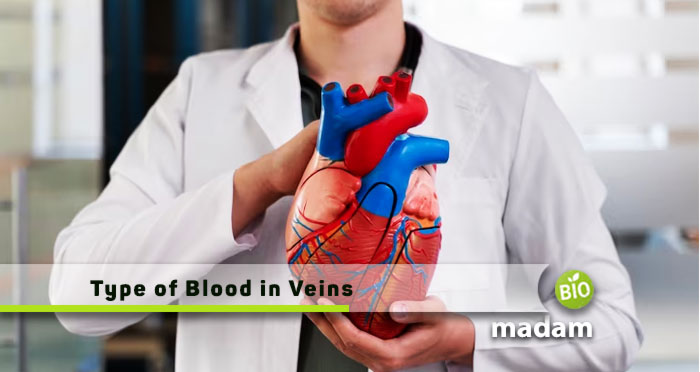The human body is undoubtedly a wonder in itself. It is a complex and organized system of different cells, tissues, and organs. All these organs and organ systems work in coordination to make life possible. The most intriguing part of the human body is the intricate network of blood vessels found in the body. These blood vessels are responsible for delivering nutrients and oxygen to every part of the body.
There are three types of blood vessels found in the body named arteries, veins, and capillaries, responsible for carrying two types of blood throughout the body. They carry either oxygenated blood or deoxygenated blood. Most people wonder whether veins have oxygenated blood or deoxygenated blood. So, without any delay let’s dive into the details of this and the blood vessels.
What is Oxygenated Blood?
Blood is the fluid form of connective tissue found in the body. It is responsible for delivering food, water, minerals, gas, and other important chemicals to all parts of the body. As the name suggests, oxygenated blood contains a higher proportion of oxygen and a low proportion of carbon dioxide. Oxygenated blood is responsible for delivering oxygen to every organ. The oxygenated blood moves from the heart toward all other parts of the body.
What is Deoxygenated Blood?
Deoxygenated blood has a low proportion of oxygen and a high proportion of carbon dioxide. When the body absorbs and utilizes all the oxygen from the body it releases carbon dioxide as waste. This carbon dioxide is carried by the deoxygenated blood. This blood is also referred to as venous blood.
Do Veins Carry Oxygenated Blood?

Veins are the blood vessels typically known to carry deoxygenated blood; however, there is an exception for one. Out of all veins, pulmonary veins carry oxygenated blood. Otherwise, these blood vessels return the low-oxygen (deoxygenated) blood from all over the body to the heart. The heart then sends this blood to both lungs for reoxygenation. The human body comprises over 34 main veins, classified into four main types. Each vein is present at a specific place and performs its assigned tasks. Let’s discuss the types of veins briefly here.
Types of Veins
The 4 types of veins present in the body are:
- Deep Veins: Located within the muscle tissue
- Superficial Veins: Located closer to the skin’s surface
- Pulmonary Veins: Two sets of pulmonary veins are present in each lung to carry oxygenated blood back to the heart
- Systemic Veins: Located throughout the body to carry deoxygenated blood from all over the body back to the heart
Are Veins Full of Oxygen?
No, veins are generally low on oxygen and high on carbon dioxide. They collect oxygen-poor blood from different tissues and organs of the body and then transport it to the heart for reoxygenation.
Which Vein Carries Oxygenated Blood?
Pulmonary veins, as mentioned above, are the only exception that carries oxygenated blood. Each lung contains two sets of pulmonary veins. These 4 veins connect the lungs to the heart. They are responsible for carrying the oxygenated blood from the lungs back to the heart and then from the heart, this oxygenated blood is transported throughout the body.
Which Blood Vessels Carry Oxygenated Blood?
Arteries are actually the blood vessels carrying oxygenated blood from the heart to the rest of the body. This blood is oxygen-rich and full of nutrients, necessary for the body’s normal functioning. All arteries carry oxygenated blood except for pulmonary arteries. Pulmonary arteries carry deoxygenated blood from the right side of the heart to the lungs where deoxygenated blood is converted to oxygenated blood.
Types of Arteries
There are three types of arteries present in the body. They are mentioned here:
- Elastic Arteries: These are conducting arteries and with each pulse of the heart the middle layer of these arteries is stretched
- Muscular Arteries: These are smaller than the elastic arteries and collect blood, including plasma, from them and branch into smaller arteries
- Arterioles: These are the smallest type of arteries that carry the blood to smaller capillary networks
What is the Difference between Veins and Arteries?

The following table describes all the main differences between arteries and veins.
| Arteries | Veins |
| Carry blood away from the heart | Carry blood toward the heart |
| High oxygen concentration | Low oxygen concentration |
| Consist of a thick elastic muscle layer | Consist of a thin elastic muscle layer |
| Contains no valves | Contains semilunar valves |
| Deep in the skin | Near the skin |
| Red in color | Blue in color |
| High B.P. (120/80 mm Hg) | Low B.P. (5 mm Hg) |
| Pulse detected | Pulse not detected |
| Removes waste from the extracellular environment | Provides nutrients to body |
Final Thoughts
The human body consists of a network of intricate patterns of blood vessels. These vessels include arteries, veins, and capillaries. Two types of blood are carried through these vessels i.e., Oxygenated and deoxygenated blood. All veins carry deoxygenated blood from the body to the heart except for pulmonary veins which carry oxygenated blood from the lungs to the heart. Arteries are responsible for carrying oxygenated blood from the heart to the rest of the body except for the pulmonary artery carrying deoxygenated blood from the heart to the lungs.
FAQs
How much blood do veins carry?
Almost 70% of the total blood is carried in the veins. This is because veins are thinner and less rigid than arteries thus, they can carry more blood than the arteries at all times.
How much blood do arteries carry?
Only 10 to 15% of the blood is carried by the arteries at all times. This is because arteries can tolerate greater pressure and force but are unable to carry larger blood volumes.
Which vein carries the most blood?
The two most prominent veins, the superior vena cava and inferior vena cava carry the most blood. The superior vena cava is responsible for carrying the blood from upper body parts such as the head and arms to the heart. Whereas the inferior vena cava is responsible for carrying blood from the lower body parts such as the legs and abdomen to the heart.
In which part of the body is blood oxygenated?
Blood is oxygenated in the lungs. Pulmonary arteries carry the deoxygenated blood from the right ventricle to the lungs where blood is oxygenated and sent back to the heart through the pulmonary veins.
Which is the largest artery in the body?
Aorta is the largest artery present in the body. It carries blood from the heart to the rest of the body.

Hello, I would like to introduce myself to you! I am Chelsea Rogers, an experienced blog writer for science articles, holding an MPhil degree. My enthusiasm to grab the best knowledge, let it relate to botany, zoology, or any other science branch. Read my articles & let me wait for your words s in the comment section.

